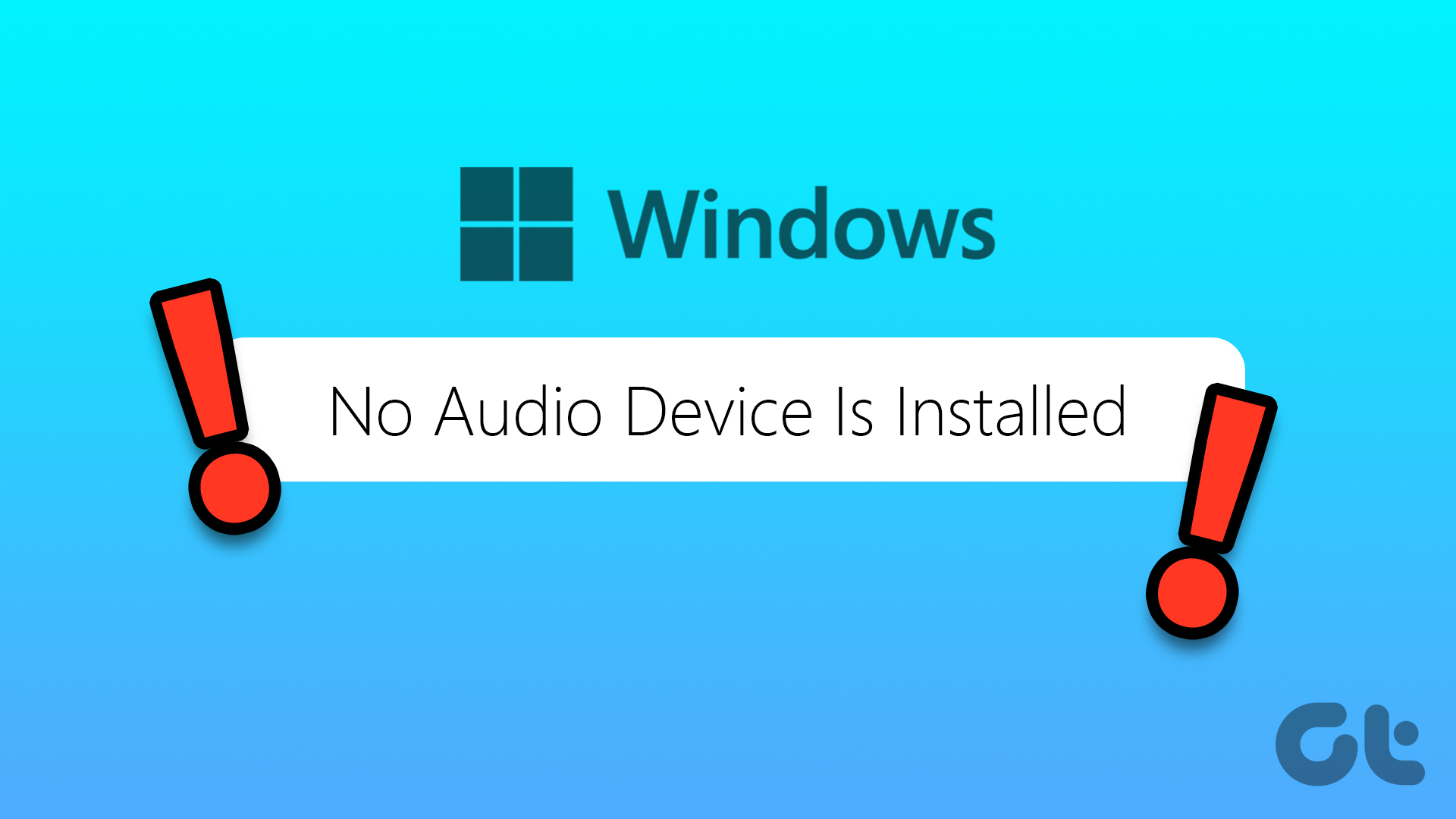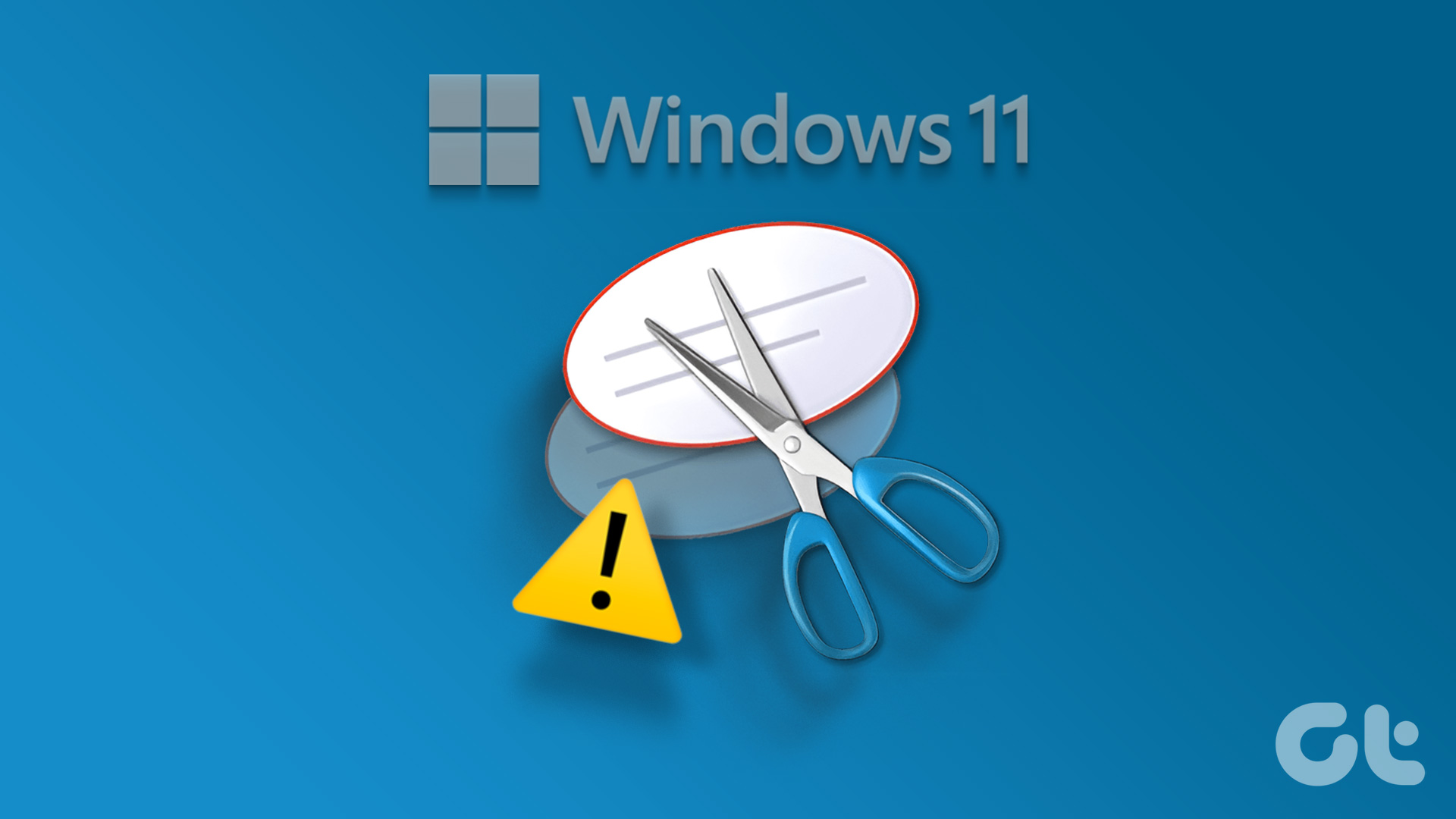So the other day, I was troubleshooting an issue on my friend’s PC using TeamViewer. And much to my annoyance, I realized that there was no sound coming from the other side. If it was an issue that didn’t require audio, I would have gladly let it go. But as luck would have it, it was a VLC-related issue for which explicitly needed audio.

In situations such as these, the sound settings are the usual culprits. It can be either related to the individual module (Remote Control or Meeting), or to the program which you are running on the other person’s machine.
So, in this post today, we cover both the aspects and show you how to enable audio in TeamViewer on Windows 10 computers.
Audio in Remote Control Sessions
Step 1: Once you have opened Team Viewer, go to the main window and click on Extras > Options.
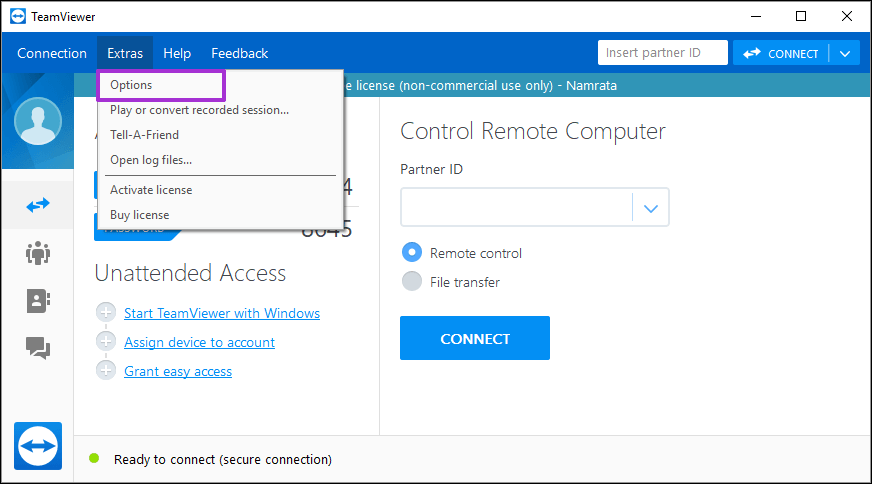
Step 2: Click on Remote control (third option from the top) and check the ‘Play computer sounds and music’ option under the Remote control defaults section.

For audio to function normally remote control sessions, the above option needs to stay enabled on both the computers.
However, if you are still facing issues in playing sound from other applications like VLC, a peek into the audio settings of VLC should get it working.
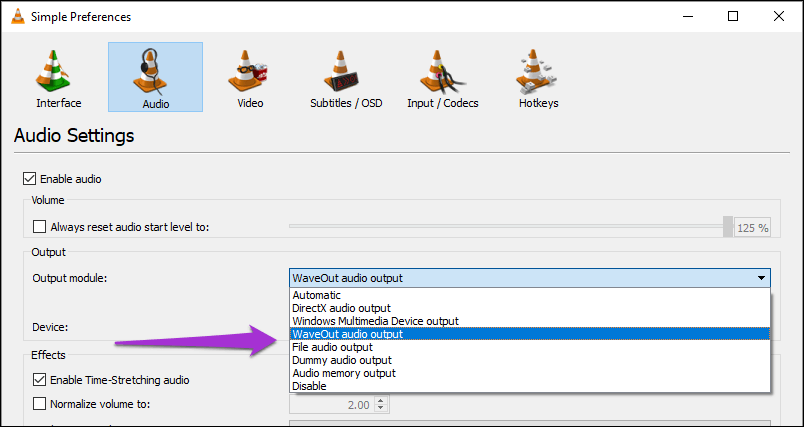
In the VLC, Click on Tools > Preferences and select the Audio tab. Once in, go to the Output section and click on the drop down option menu to set the output module as WaveOut audio output. Select speakers and hit OK.
Audio in Meetings
Thankfully, in TeamViewer Meetings, the audio settings are located right on the meeting interface. Meaning that you don’t have to leave the screen to rummage through the settings.
Once you’ve started a meeting, tap on the Cog icon in the Screen Sharing card. Select Share computer sounds and music. That’s it. The participants on the other side will be able to hear the audio almost immediately.
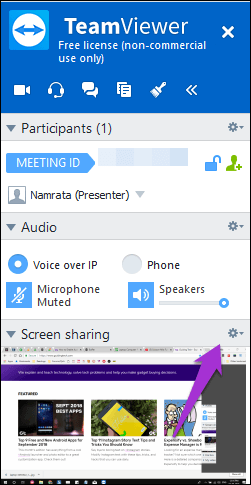
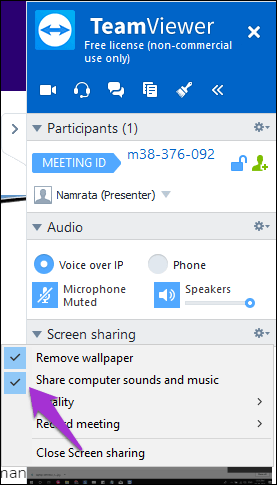
Just be sure to keep the microphone turned off when you are not speaking. Wait, that’s not all.
More TeamViewer Tricks
1. Record Sessions Automatically
Did you know that you can record Remote Control sessions automatically? Yep, you read that right. This trick is useful if you often forget to tap on the Record button.
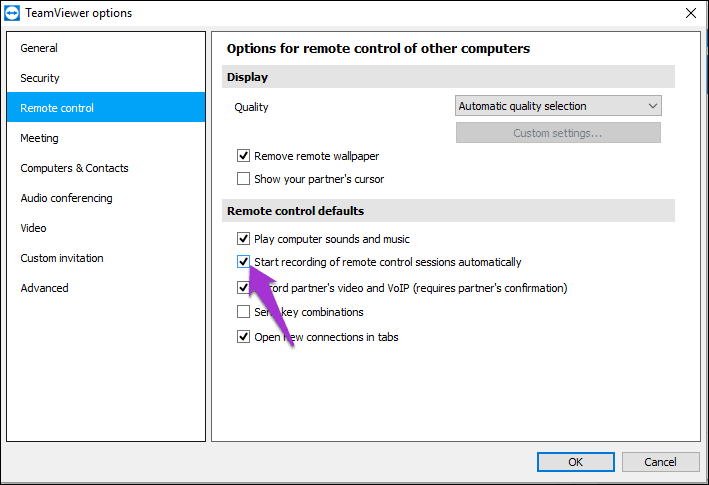
All you have to do is go to Extras > Options > Remote control and check the option for automatic screen recording. This way, you won’t have to bother about tapping on the record button every time you start a session.
2. Optimize Speed
If only remote sessions (and video calls) could be as seamless and crystal clear as they show in the movies. Unfortunately, reality and expectations are very much different. A little lag is somewhat acceptable, but it can get quite annoying at times when the cursor seems to move in fits and bursts.

Thankfully, this can be fixed to an extent by optimizing the speed. Click on View and select Optimize speed. Also, if you have a bad or slow connection, a click on Optimize Quality will also help.
3. Set up a Confirmation Box
The default settings of TeamViewer allows full access to your computer when you join a Remote Control session. But if you’d want the tool to ask for your permission (before you give the control), it can also be done.
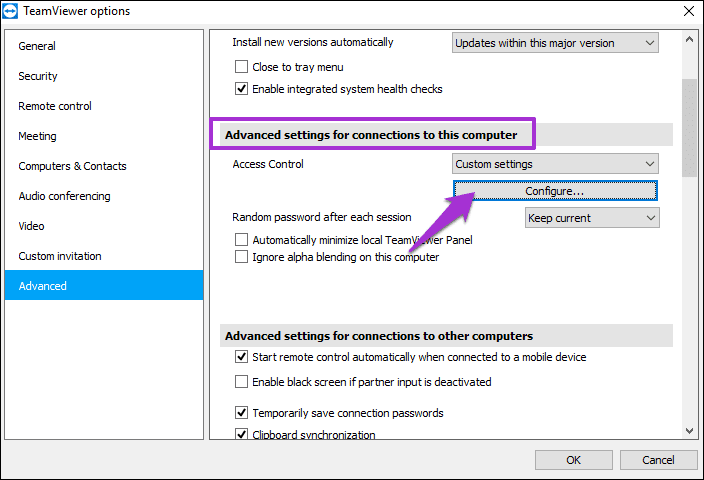
To do so, you’d need to head over to the Advanced options (Extras > Options) and search for the ‘Advanced settings for connection to this computer’ card. Under Access control, select Custom settings and click on Configure.
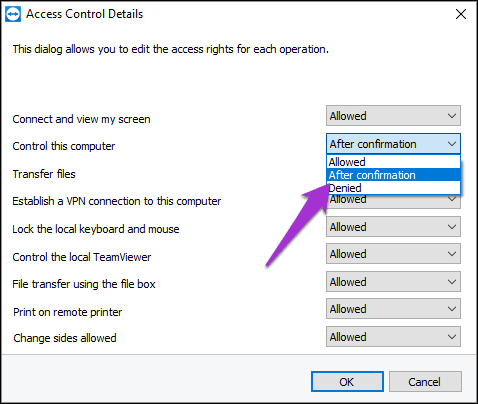
Click on the drop down menu for Control this computer option and select After confirmation. That’s it!
4. Reboot like a Pro
If you have to reboot the client machine, we all know that the standard action of tapping on the Restart button will close TeamViewer. And you’d have to reopen the connection to see whether the changes have taken effect. Well, we have a shorter way for you.
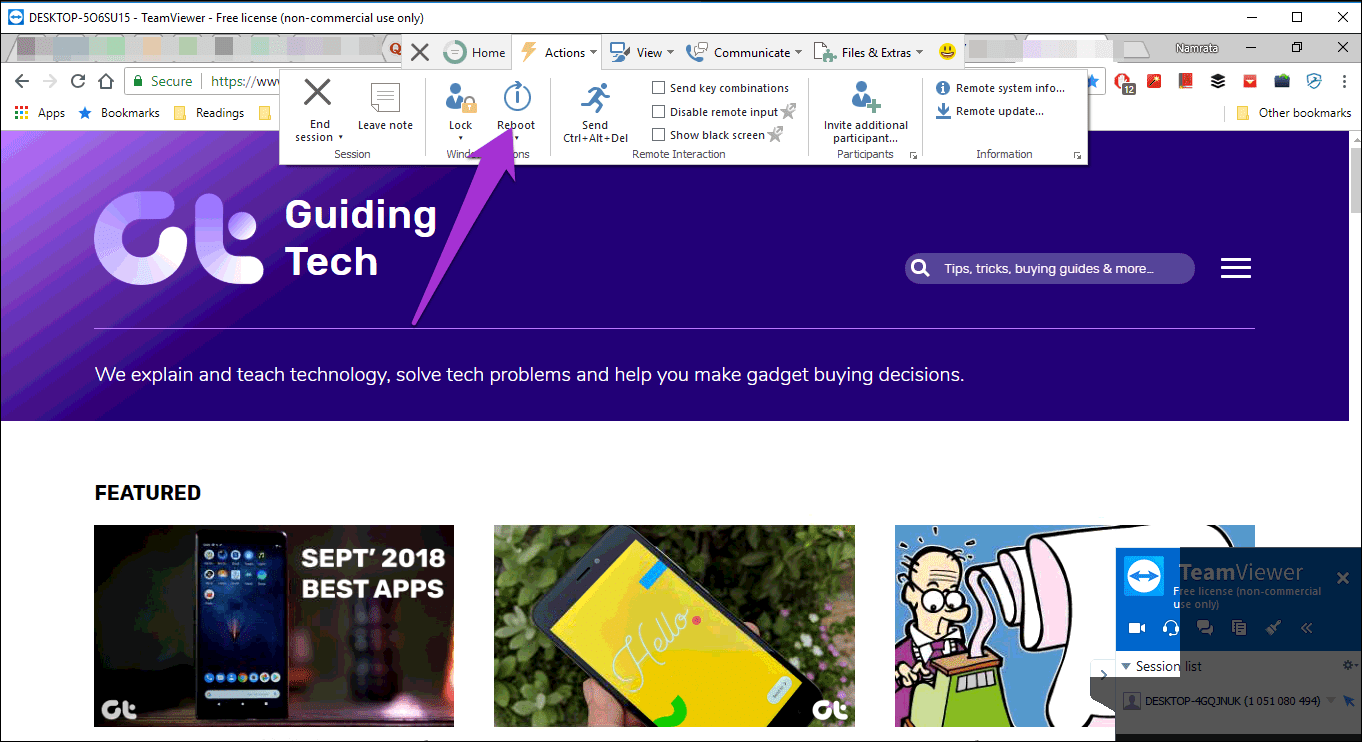
Click on Action on the Toolbar and select Reboot.
Note:
Take Remote Sessions like a Pro
Undoubtedly TeamViewer has simplified remote access and is compatible across multiple platforms. And is available for free. Plus, it allows for multiple remote sessions. Unless you’re using it as part of a support program, remote assistance is not something that one needs on a daily basis. For me, it’s usually reserved for helping my father with his somewhat ancient system.
What about you? How often do you have to use TeamViewer and which features do you tend to use often?
Was this helpful?
Last updated on 07 February, 2022
The article above may contain affiliate links which help support Guiding Tech. The content remains unbiased and authentic and will never affect our editorial integrity.






